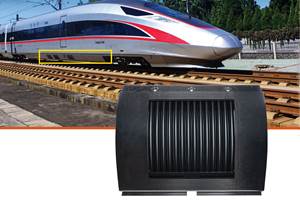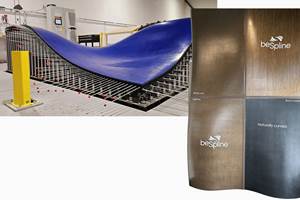Why standardize composites test protocols?
Every column I write for HPC eventually refers to “standard” test methods. But why are standards written? What groups promote these standards, and who actually writes them? Most importantly, why do the rest of us need to follow their standards, and what if we don’t? To answer the first question, we must step back into
Every column I write for HPC eventually refers to “standard” test methods. But why are standards written? What groups promote these standards, and who actually writes them? Most importantly, why do the rest of us need to follow their standards, and what if we don’t?
To answer the first question, we must step back into history. During the early development of composites, which extended well into the 1960s, there existed few composites testing standards (or composites standards of any type, for that matter). Those that were written were often ignored, in part because many were inappropriate extensions of concepts developed previously for homogeneous materials, such as metals. While some of the standard methods were very good, active experimenters quickly realized that many others did not perform well and were forced to develop their own methods. Again, some were very good, and others were not so good. Both the good and the bad found their way into the published literature, leading to much confusion. Over time, many different composites test procedures were created by and primarily for particular governmental, academic and industrial institutions. As long as the cycle of research, production, sales and use of composites was confined primarily to those who shared a commitment to one organization’s standards, all went well.
However, as composites technology grew, material suppliers wanted to sell their new fibers, resins and prepregs to a broader range of customers. A significant market in these early days was sporting goods, but in the U.S., even more prominent were the U.S. space program (NASA) and the military, particularly the U.S. Air Force. Understandably, the NASA and Pentagon performance requirements were much more rigorous than for most commercial applications, forcing these governmental agencies to write their own standards and testing procedures. Again, some were good and others not so good. There was a clear need for standardization on a wider scale.
Whose standard prevails?
Standardization in general was certainly not a new concept at the time. For example, in the U.S., the American Society for Testing and Materials (ASTM) had been formed in 1898 and was well established as a standards group. Recognizing the need for universal composites standards very early, ASTM formed Committee D30-Composites in 1964. Until then, ASTM’s Committee D20-Plastics had carried the responsibility for composites test method development. In fact, many of the sandwich beam test methods I discussed here previously (HPC September 2006, p. 9) were first standardized by ASTM in the 1950s and written by members of Committee D20.
ASTM is one example of a formal standards development group, but there are many others. Just about every developed and developing country has at least one national standards group. Thus, standards coordination at an international level also is a desired goal, particularly with the current emphasis on globalization. Toward that end, the International Organization for Standardization (ISO, Geneva, Switzerland) was formed in 1947, with 25 member nations, initially. ISO currently has a primary membership representing more than 100 countries, plus more than 50 secondary (nonvoting) member nations. Like ASTM, ISO is a formal standards-creating group, with each member nation having just one vote. The U.S. voting representative in ISO is the American National Standards Institute (ANSI).
The difficulty of getting such a diverse membership to agree on one way of performing a specific type of test is obvious. Formal standards development is based on consensus, openness and due process. In ASTM, for example, all committee members have a voice and a vote. It should be noted that, while multiple individuals within an organization may have membership in ASTM, only one member from that organization may vote. This prevents large companies from dominating the decision-making process. (For the same reason, ISO permits one vote per member nation.) Any issue raised by a negative vote must either be resolved to the satisfaction of the negative voter or eventually found unpersuasive by the membership. The process is complicated by the fact that all committee members are volunteers and typically have limited time available. Also, the committees usually meet just twice a year. Although the latter deterrent to timely progress now is mitigated somewhat by the use of the Internet between formal meetings, the approval process still can be long and tortuous.
This certainly has been the case, historically, in the development of composites standards. Obviously, the various governmental, academic and industry groups that were active in early test method development had a strong vested interest in their own methods. This was especially true in the aerospace industry, where the large airframers — major users of composites — were, and still are, in a position to require material suppliers to follow the airframer’s unique testing specifications when qualifying materials for their programs. This created a major problem for the materials suppliers, because they usually sold product to multiple airframers. It is very time-consuming and expensive to qualify a material to a particular customer’s specifications. To repeat this process for multiple customers is usually cost-prohibitive.
Market-driven test methods
This situation made the work of formal standards groups particularly difficult and gave rise to another type of standards-writing group: the consortium. Material suppliers and other interested parties began to band together to develop common specifications. Consortia are typically market-driven. Their members share the need to expedite test method standardization because they must satisfy customers’ quality needs. While several consortia have been formed over the years, the Suppliers of Advanced Composite Materials Assn. (SACMA) gained particular prominence. SACMA issued its first set of SRMs (SACMA Recommended Methods) in 1988, written in a style similar to ASTM standards. SACMA deliberately called them Recommended Methods in the hope that ASTM would adopt them as ASTM standards. SACMA was relatively small, with perhaps only one or, at most, a few “experts” available to write a particular standard. Thus, the task could be done quickly.
Although SACMA disbanded in 2000 (due, in part, to a particularly difficult downturn in the aerospace industry), other consortia remain. However, most consortia tend to have narrow interests and, while they are timely, their market-driven standards tend to reflect the interests and preferred methods of a select group, with minimal peer review. For that reason, the need has been great in recent years for carefully considered standards that have been fully submitted to peer review. Thus, the work of international groups such as ASTM and ISO is critical. Why? Here, the answer to our last question becomes clear: The rest of us need to follow their standards because, of course, they are not “their” standards but ultimately ours. Developed by people who represent many points of view, a common standard makes testing more productive and useful to all. If we, in our own organizations, have a vested interest in what a standard will contain, then we need to get involved in its development or, if a poor standard is in place, work toward its revision. A formal standards organization, such as ASTM, is open to any individual worldwide. ASTM is now officially ASTM International Inc. to emphasize its global nature. Likewise, we can become members of consortia, which offer even more direct avenues to safeguard our interests.
And what are the consequences if we don’t follow standards? The fact is that composites technology has advanced well beyond the point where individual organizations can go their own way. Inter-organizational cooperation is now a necessity. Too much is at stake to risk nonconformity. The financial consequences, alone, would be significant.
Fortunately, both the formal and consortia standards groups within the U.S. have been very active in recent years, as have individual organizations, and thus the standards available today tend to be current and relatively complete. In particular, ASTM Committee D30 has done an outstanding job in the past few years, bringing unity to standards within the U.S. Unfortunately, some U.S. standards are out of harmony with those published in other countries. Progress toward global harmonization will be a topic for future discussion.
Related Content
Jeep all-composite roof receivers achieve steel performance at low mass
Ultrashort carbon fiber/PPA replaces steel on rooftop brackets to hold Jeep soft tops, hardtops.
Read MoreAutomated robotic NDT enhances capabilities for composites
Kineco Kaman Composites India uses a bespoke Fill Accubot ultrasonic testing system to boost inspection efficiency and productivity.
Read MoreComposite sidewall cover expands options for fire-safe rail components
R&D project by CG Rail explores use of carbon fiber-reinforced thermoplastics and recycled manufacturing scrap to meet fire safety, weight and volume targets.
Read MorePlant tour: BeSpline/Addcomp, Sherbrooke, QC, Canada
Composites automation specialist increases access to next-gen technologies, including novel AFP systems and unique 3D parts using adaptive molds.
Read MoreRead Next
VIDEO: High-volume processing for fiberglass components
Cannon Ergos, a company specializing in high-ton presses and equipment for composites fabrication and plastics processing, displayed automotive and industrial components at CAMX 2024.
Read MoreDeveloping bonded composite repair for ships, offshore units
Bureau Veritas and industry partners issue guidelines and pave the way for certification via StrengthBond Offshore project.
Read More“Structured air” TPS safeguards composite structures
Powered by an 85% air/15% pure polyimide aerogel, Blueshift’s novel material system protects structures during transient thermal events from -200°C to beyond 2400°C for rockets, battery boxes and more.
Read More




















